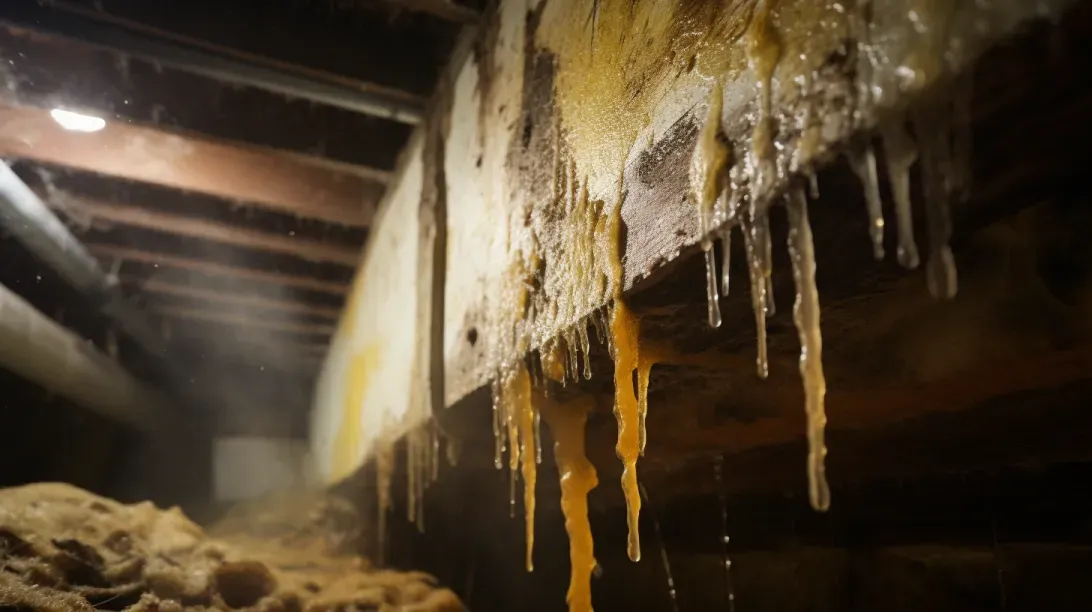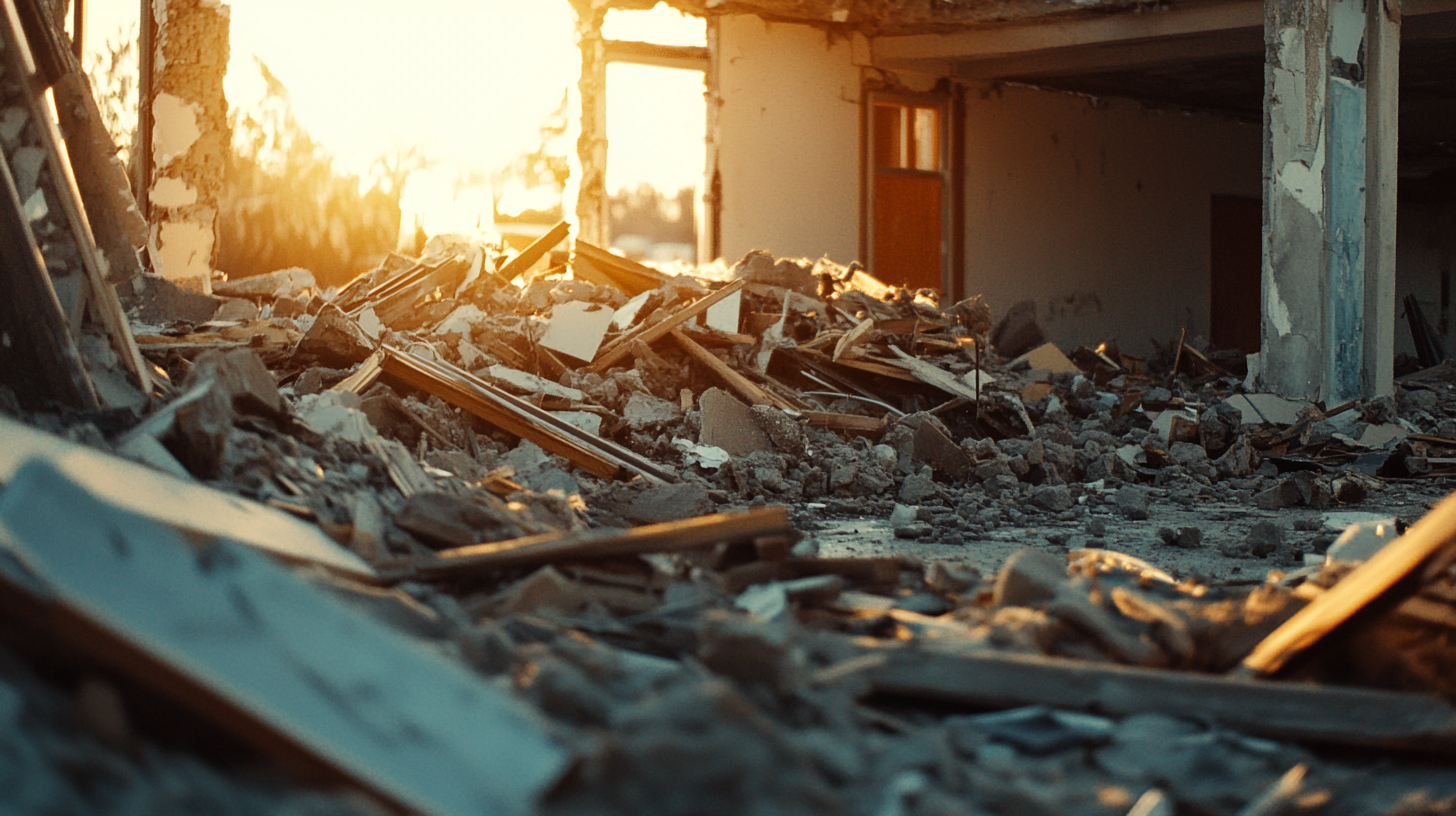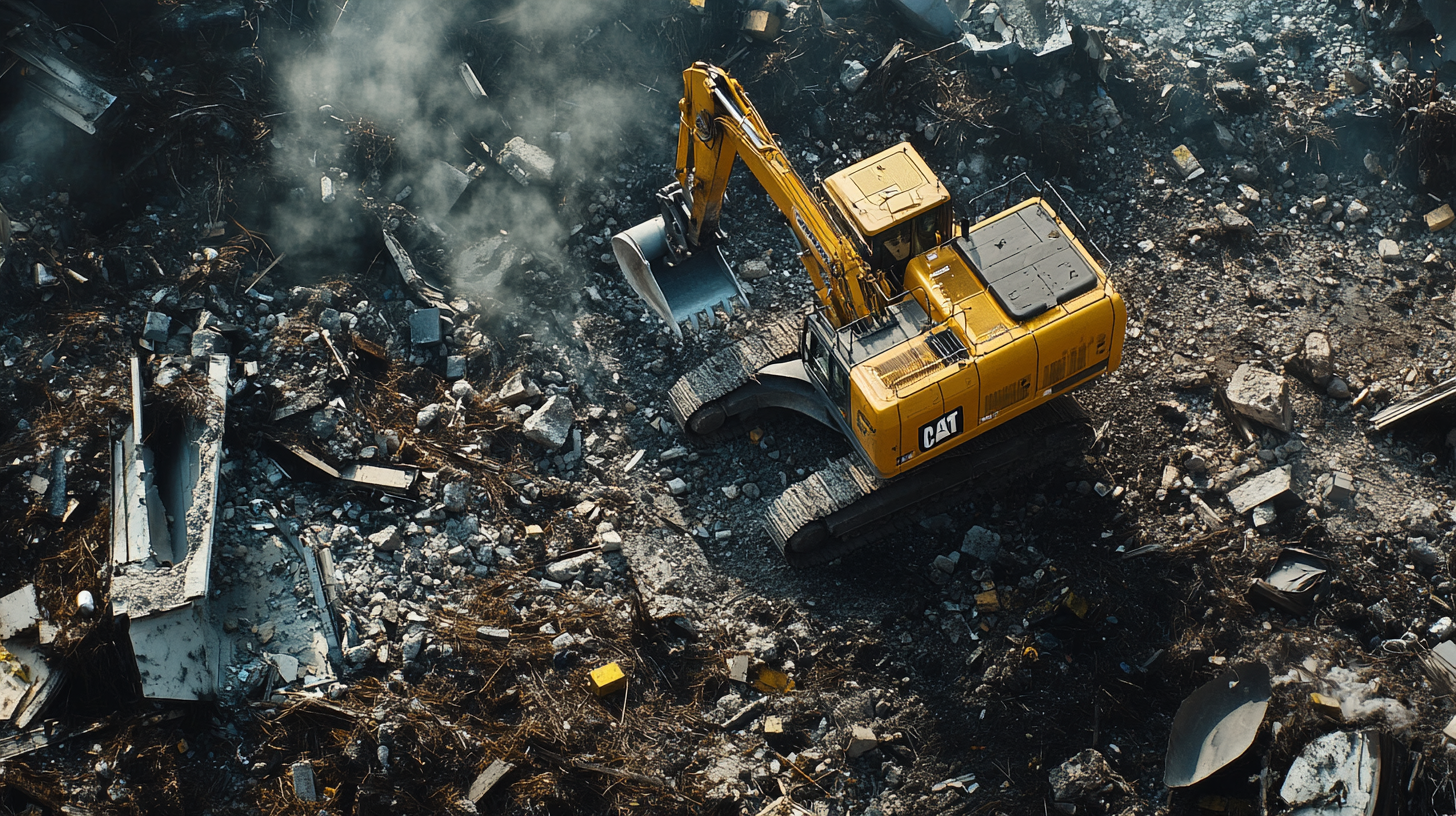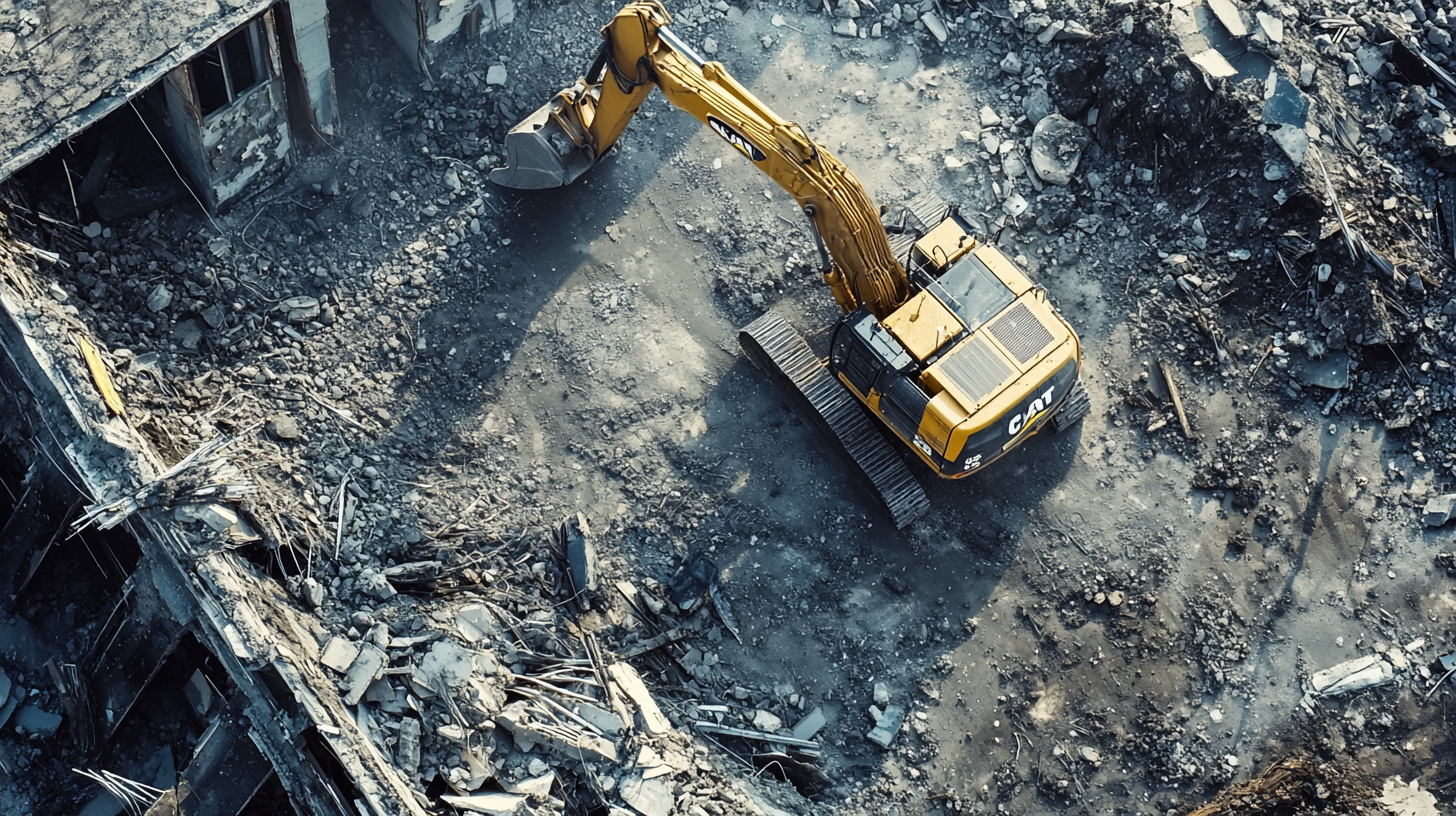
Mold removal, a critical aspect of maintaining healthy indoor environments, often presents complex challenges that vary widely from one scenario to another. Understanding the intricacies of mold remediation is not just about knowing the technicalities; it's about grasping how these solutions unfold in real-life situations. This is where the power of case studies becomes invaluable. By delving into actual mold removal cases, we gain a deeper, more nuanced understanding of the processes, challenges, and outcomes involved.
A Journey Through Real-Life Mold Remediation Scenarios
The purpose of this blog is to take you through a series of real-life case studies that shed light on the diverse aspects of mold removal. Each case study is a story of its own, offering unique insights and lessons. From residential homes grappling with hidden mold issues to large-scale commercial buildings undertaking extensive remediation, these stories provide a rich tapestry of experiences and solutions.
Educational Value of Mold Removal Case Studies
As we navigate through these case studies, we emphasize their educational value. They are not just narratives; they are learning opportunities that offer practical insights and strategies. For homeowners, property managers, and mold remediation professionals alike, these case studies serve as a valuable resource for understanding the effectiveness of different mold removal approaches, the importance of timely intervention, and the impact of professional expertise in ensuring safe, thorough, and lasting mold remediation.
Case Study 1: Residential Mold Removal
This case study explores a real-life scenario of mold removal in a residential property, offering insights into the challenges faced and the strategies employed to effectively address the mold issue. It serves as an educational example for homeowners and professionals alike, highlighting the importance of proper mold remediation techniques.
Background and Challenge
The property in question was a single-family home located in a humid climate region, which contributed to the mold problem. The homeowners initially noticed musty odors and visible mold growth in the basement, which is a common area for moisture accumulation and mold issues.
Key Challenges:
- Extent of Mold Growth: The mold had spread across the basement walls and flooring.
- Health Concerns: Family members were experiencing allergies, emphasizing the need for urgent remediation.
- Moisture Source: Identifying and addressing the source of moisture that was contributing to the mold growth.
This scenario underscores the importance of early detection and intervention in mold issues to prevent extensive damage and health risks.
Mold Removal Strategy
The mold removal process in this case involved a comprehensive approach, combining thorough assessment and strategic remediation techniques.
Approach to Mold Removal:
- Initial Assessment: A professional mold inspection was conducted to assess the extent of the problem and identify the moisture source.
- Moisture Control: Fixing the underlying moisture issue, which included repairing basement leaks and improving ventilation.
- Mold Remediation: The remediation process involved removing contaminated materials, cleaning the affected areas with specialized mold removal agents, and using dehumidifiers to dry out the space.
- Preventive Measures: Recommendations were made for ongoing moisture management to prevent future mold growth.
This strategy highlights the importance of a holistic approach to mold removal, addressing both the symptom (mold growth) and the cause (moisture).
Results and Key Takeaways
The mold removal efforts were successful, resulting in the complete eradication of mold from the property and improved air quality.
Outcomes and Lessons Learned:
- Effective Remediation: The home was restored to a safe living condition, with no further mold-related health issues reported.
- Importance of Professional Expertise: The case underscores the value of involving mold removal experts who can accurately diagnose and resolve complex mold issues.
- Ongoing Vigilance: The homeowners learned the importance of regular inspections and moisture control in preventing mold recurrence.
This case study serves as a valuable lesson in the effective handling of residential mold problems, emphasizing the need for professional intervention and proactive moisture management.
Case Study 2: Commercial Mold Remediation
This case study delves into a significant mold remediation project in a commercial property, offering valuable insights into the complexities and solutions involved in handling mold issues in larger, high-traffic environments. It serves as an instructive example for facility managers, business owners, and remediation professionals.
Background and Challenge
The commercial property in this case was a large office building located in an area with high humidity levels, which contributed to the mold problem. The mold infestation was discovered during a routine maintenance check, with extensive growth found in the HVAC system and several office spaces.
Key Challenges:
- Widespread Infestation: The mold had affected multiple areas, including air ducts, walls, and ceiling tiles.
- Business Operations: The need to minimize disruption to the building’s operations while conducting remediation.
- Health and Safety: Ensuring the health and safety of employees and visitors during and after the remediation process.
This scenario highlights the unique challenges of mold remediation in commercial settings, where the scale and impact of the problem can be significantly larger.
Remediation Techniques Employed
The mold remediation process in this commercial setting required a strategic and multi-faceted approach, utilizing advanced techniques and specialized equipment.
Approach to Mold Remediation:
- HVAC System Cleaning: Thorough cleaning and decontamination of the HVAC system to prevent the spread of mold spores.
- Use of Industrial Dehumidifiers: To control humidity levels and dry out affected areas effectively.
- Containment and Air Filtration: Setting up containment zones and using HEPA air scrubbers to prevent cross-contamination.
- Mold Removal and Cleaning: Employing chemical and physical methods to remove mold from surfaces and materials.
- Restoration: Replacing contaminated materials, such as ceiling tiles and drywall, to ensure complete remediation.
This comprehensive approach underscores the need for specialized strategies in tackling large-scale mold issues in commercial environments.
Outcomes and Learning Points
The remediation efforts were successful, leading to the complete removal of mold from the property and a safer environment for occupants.
Outcomes and Insights:
- Successful Remediation: Post-remediation testing confirmed the elimination of mold, and normal business operations were resumed with minimal disruption.
- Importance of Regular Maintenance: Regular checks and maintenance of HVAC systems were identified as key in preventing future mold issues.
- Employee Awareness and Safety: The project highlighted the importance of employee awareness regarding mold risks and the measures taken to ensure their safety.
This case study provides critical learning points in commercial mold remediation, emphasizing the importance of comprehensive strategies, regular maintenance, and prioritizing health and safety in the workplace.
Case Study 3: Mold in a Historic Building
This case study explores the unique and delicate challenge of addressing mold in a historic building. Such structures not only require mold remediation but also demand careful preservation of their historical integrity. This scenario provides insightful lessons on balancing mold removal with the conservation of cultural heritage.
Historical Significance and Mold Issues
The property in focus is a centuries-old historic building, recognized for its cultural and architectural significance. The building's age and design presented unique challenges for mold remediation.
Challenges in a Historic Building:
- Sensitive Materials: The building featured original woodwork and antique fixtures susceptible to damage.
- Ventilation Limitations: Given its age, the building had poor ventilation systems, contributing to mold growth.
- Preservation Requirements: Any remediation work needed to comply with regulations for historic preservation.
These factors required a mold removal approach that was not only effective but also respectful of the building's historical value.
Specialized Mold Removal Approach
Given the constraints and sensitivities of working in a historic building, a specialized approach to mold removal was essential.
Techniques in Specialized Mold Removal:
- Gentle Cleaning Methods: Utilizing less abrasive cleaning techniques to protect delicate surfaces and materials.
- Environmental Controls: Implementing temporary climate control solutions to reduce humidity without impacting the building's structure.
- Collaboration with Preservation Experts: Working alongside historians and preservation experts to ensure that remediation efforts did not compromise the building's integrity.
- Customized Solutions: Tailoring the mold removal process to address specific areas of concern, such as antique wood or plaster.
This approach highlights the need for customized, careful handling of mold issues in historic properties.
Results and Preservation Success
The mold remediation efforts were successful, with the mold being effectively removed while preserving the historical aspects of the building.
Outcomes and Impact on Preservation:
- Mold Eradication: Post-remediation assessments confirmed the successful removal of mold.
- Integrity Maintained: The building's historical elements were preserved, with no damage to its architectural heritage.
- Improved Environmental Conditions: The building's internal environment was improved, reducing the likelihood of future mold issues.
- Preservation Awareness: The project raised awareness about the importance of regular maintenance and monitoring in historic buildings to prevent mold.
This case study serves as a valuable example of how mold remediation can be successfully conducted in historic buildings, balancing the need for effective mold removal with the imperative of preserving historical integrity.
Innovative Techniques in Mold Removal
The field of mold remediation is continually evolving, with new techniques and technologies emerging to tackle this persistent problem more effectively. This section explores some of the most innovative methods recently featured in mold removal case studies, highlighting how these advancements are changing the landscape of mold remediation.
Exploring New Methods
Recent advancements in mold removal focus on efficiency, effectiveness, and minimizing environmental impact. Some of these innovative methods include:
- Ultraviolet (UV) Light Technology: Utilizing UV light to kill mold spores without the need for chemicals.
- Dry Ice Blasting: A method that uses dry ice pellets to remove mold from surfaces, which is especially effective for large areas and sensitive surfaces.
- Eco-Friendly and Non-Toxic Solutions: The development of more environmentally friendly mold removal agents that are safe for occupants and do not harm the environment.
- Advanced Moisture Detection Tools: Using sophisticated sensors and tools to detect hidden moisture sources, preventing future mold growth.
These methods represent a shift towards more sustainable and occupant-friendly approaches in mold remediation.
Case Study Highlights
Several recent case studies have demonstrated the success of these innovative mold removal techniques:
- UV Light Technology in a School Building: A case study in a school where traditional mold removal methods were disruptive. The use of UV light technology allowed for a non-invasive and quick remediation process, effectively killing mold spores without the use of chemicals.
- Dry Ice Blasting in a Historic Museum: In this case, dry ice blasting was used to remove mold from delicate artifacts and surfaces. This method proved to be highly effective in preserving the integrity of the museum's artifacts while thoroughly removing mold.
- Eco-Friendly Solutions in a Residential Home: A residential case where non-toxic, eco-friendly mold removal agents were used. This approach ensured the safety of the home's occupants, particularly children and pets, while effectively addressing the mold issue.
- Advanced Moisture Detection in a Commercial Building: This case involved using advanced moisture detection tools to identify hidden water leaks contributing to mold growth. The early detection and repair of these leaks prevented further mold proliferation.
These case studies illustrate the effectiveness of innovative mold removal techniques in various settings, showcasing their potential to revolutionize the field of mold remediation.
Lessons Learned from Mold Removal Failures
Mold removal can be a complex and challenging process, and not all efforts are successful on the first attempt. Analyzing cases of mold removal failures provides valuable insights into common pitfalls and effective strategies. This section delves into why some mold remediation efforts fail and how subsequent corrective actions lead to successful outcomes, offering crucial lessons for homeowners and professionals.
Analyzing Failed Attempts
Failed mold removal attempts often provide as much, if not more, educational value as successful ones. By examining these cases, we can identify common factors that contribute to failure and understand how to avoid them.
Key Factors in Failed Mold Removal Attempts:
- Inadequate Assessment: Underestimating the extent of mold growth or failing to identify the moisture source.
- Improper Remediation Techniques: Using methods that are not effective for the specific mold type or infestation level.
- Lack of Professional Expertise: DIY attempts or hiring non-specialized professionals leading to incomplete removal.
- Ignoring Underlying Issues: Focusing only on visible mold without addressing the root cause, such as humidity or water damage.
These factors highlight the complexities of mold remediation and the importance of a thorough and professional approach.
Corrective Actions and Successes
In cases where initial mold removal efforts failed, corrective actions were taken to address the shortcomings. These subsequent efforts often led to successful outcomes and provided valuable lessons.
How Failures Were Addressed and Lessons Learned:
- Comprehensive Reassessment: Conducting a more thorough inspection to understand the full scope of the problem.
- Engaging Mold Remediation Specialists: Hiring certified professionals with the expertise to handle complex mold issues.
- Advanced Techniques and Tools: Utilizing more sophisticated methods and equipment for effective mold removal.
- Addressing the Root Cause: Implementing measures to fix underlying issues like leaks, poor ventilation, or high humidity.
These corrective actions underscore the importance of a meticulous and expert-driven approach in mold remediation. The key takeaway from these failures is that mold removal is often more complex than it appears and requires a comprehensive, informed strategy to ensure long-lasting success.
FAQs
Contact Bull City Crawlspace Today!
Bull City Crawlspace will do everything we can to ensure your experience with us is excellent.
Request A FREE Estimate
Request a Free Estimate Form
Checkout Recent Post




Got a Question? We’re Here to Help.
You can arrange an appointment or make an enquiry by phone or email, orget in touch to us via our contact form.

